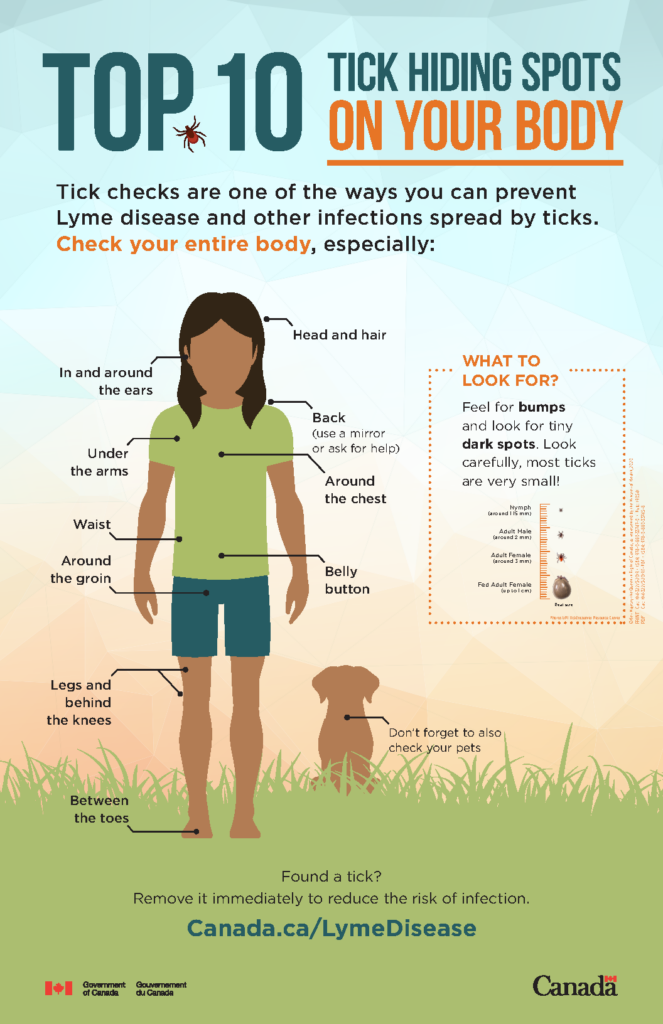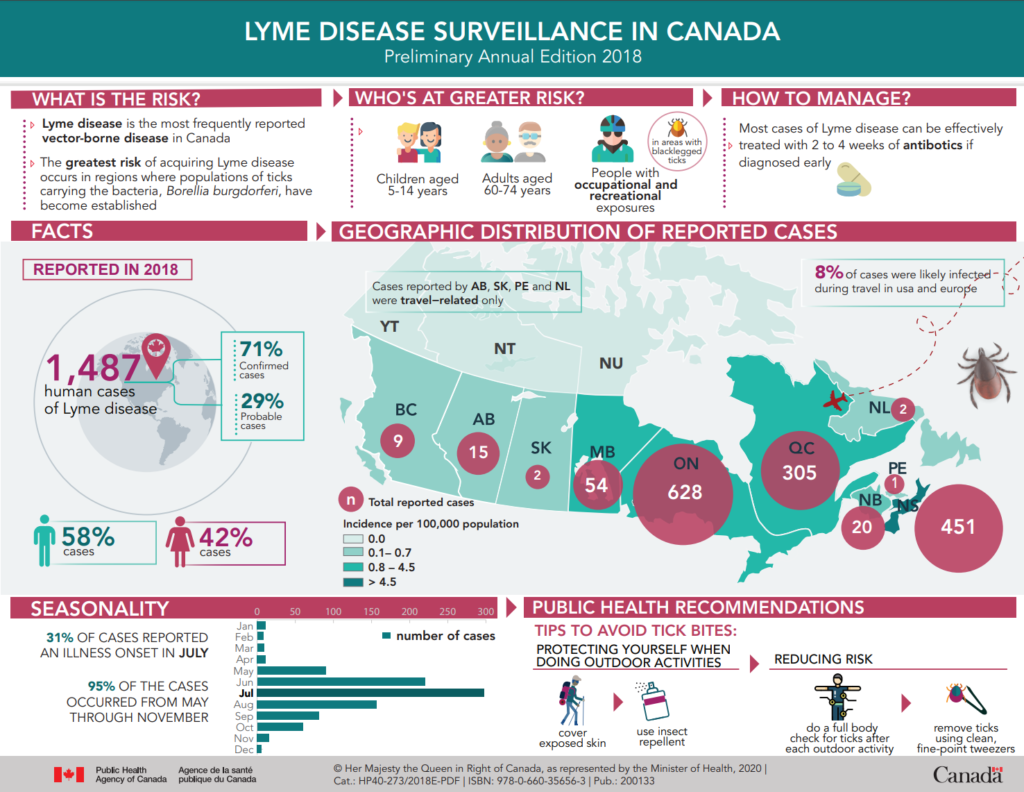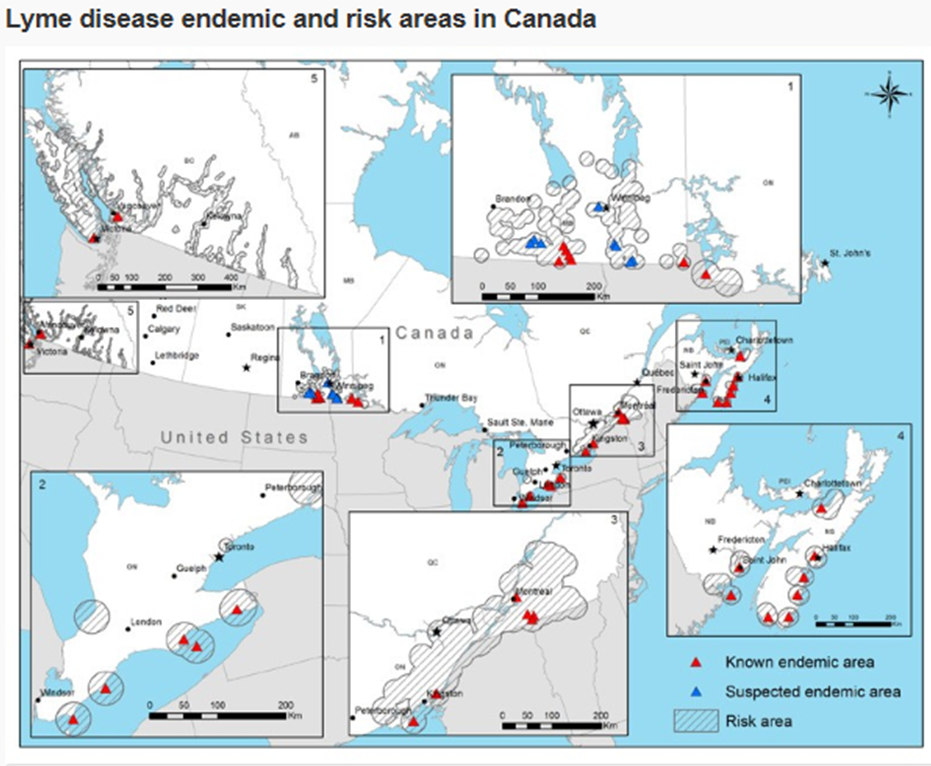Reminder – When scouting, avoid unwanted passengers – remember to watch for ticks at this time of year! Blacklegged (deer) ticks can carry Lyme Disease, anaplasmosis, babesiosis, or Powassan virus. Access information on how to safely remove and identify a tick made available by Health Canada which also recommends these “before you go” ways to help prevent tick bites:
• light coloured, long-sleeved shirts and pants help you spot ticks easier.
• tuck shirt bottoms into pants and pant cuffs into socks – seal yourself in and ticks out!
• closed-toe shoes keep ticks out!
• apply an insect repellent containing DEET or Icaridin to clothing and exposed skin (according to product label directions).
• wear permethrin-treated clothing (according to product label direction).
…. and review the full set of helpful tips!
Continued surveillance is important and enables tracking of Lyme disease incidence and risk. Follow the links to learn more and to submit ticks if you live in British Columbia, Alberta, Saskatchewan, Manitoba, Ontario, or Quebec. Access additional information posted by Health Canada related to Lyme disease surveillance which also summarized that, between 2009 and 2023, 19,983 human cases of Lyme disease were reported to provincial public health units across Canada.
Another option is the free eTick APP, a public platform for image-based identification and population monitoring of ticks in Canada. Both Google Play and iOS versions of the App enable users to upload tick photos for help with identification.
Public Health Agency of Canada has a Top 10 Tick Hiding Spots on Your Body available as a poster in multiple languages including Mi’kmaq, Mohawk, Ojibwe (Eastern), French, English, Spanish, Tagalog, Arabic, Punjabi, Chinese (simplified and traditional), and Italien. An example in English is posted below for your quick reference (Fig. 1) so check it, then yourself, and your pets!







